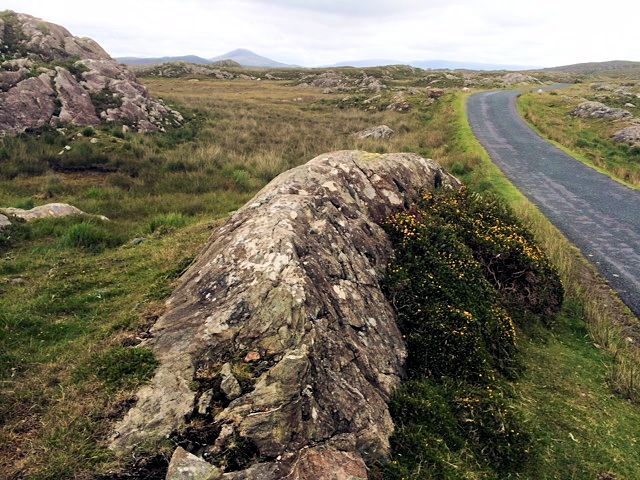Those bloody birdwatchers and their wish for good north-westerly winds to drive the seabirds on-shore. Well they had their wish, and all day I had to contend with a strong headwind and intermittent showers, making for tough cycling. It was also my fourth day of long cycles in succession, so my legs were tired.
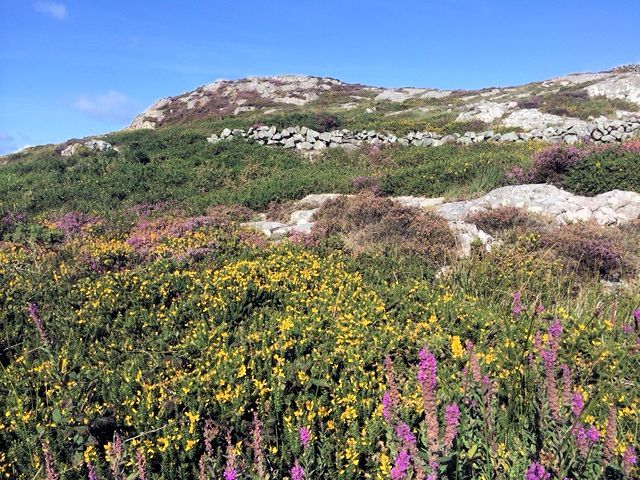
Cycled across the flat blanket bog and heathlands of south Connemara – the landscape looked at its best. The vivid purples of the heaths and heathers contrasted beautifully with the bright yellow western gorse, the low growing prostrate version of gorse that grows here. The small lakes and the seaweed bedecked shorelines added further colour. The Twelve Bens mountain range looked very imposing in the distance.
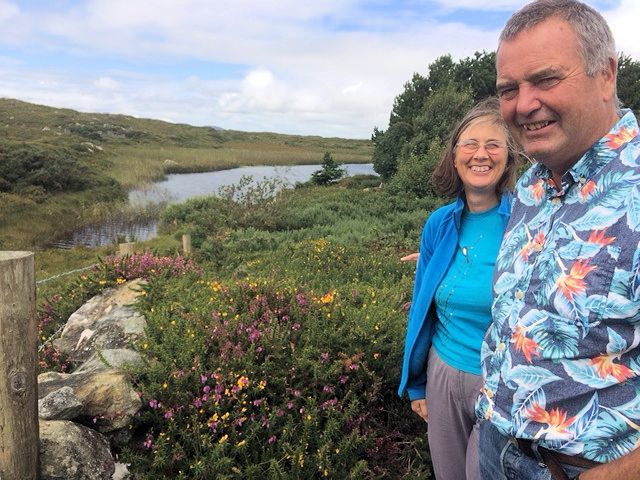
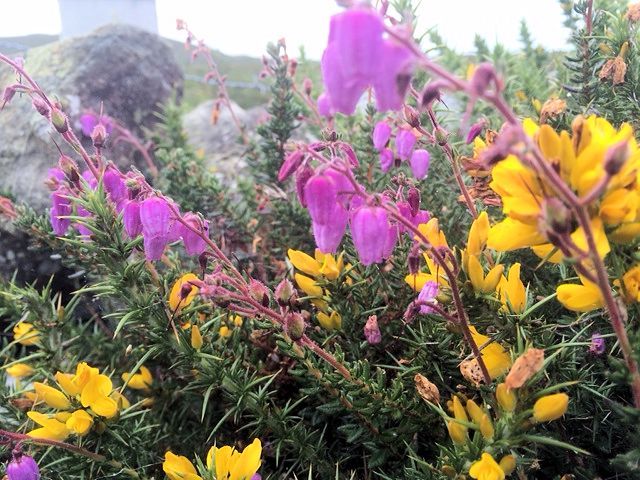
Was delighted to call in to visit Catherine and Pete Coxon in Glinsk for a very warm welcome and a much needed drying-off. Both Pete and Catherine were in Trinity when Josephine and I were post-graduates there, and we have kept in contact since. Both geographers, they have a deep knowledge of their surroundings and very inquisitive minds. And they are always great company. Was delighted to have the opportunity to meet up with them, however briefly. Couldn’t possibly leave without Pete first showing me the St. Dabeoc’s Heath, a representative of Ireland’s special Lusitanian flora, that grows wild in their back garden. That is one of a group of about a dozen species which exhibit a disjunct distribution found in the west of Ireland and on the Iberian Peninsula. This group of species has given rise to much debate as to their origin, and the nature of recolonization of Ireland by wildlife after the retreat of the last ice sheet.
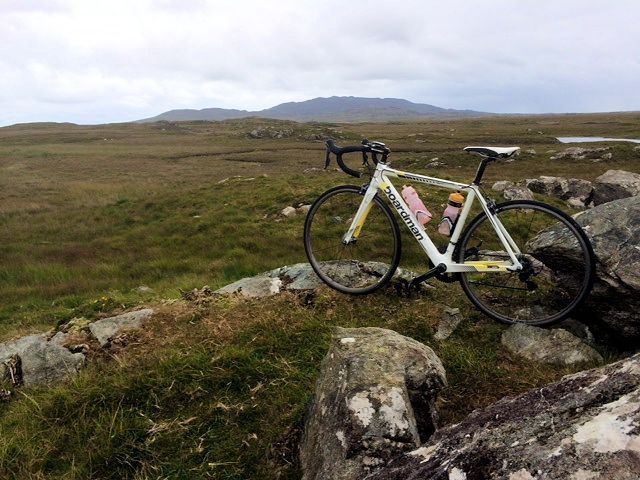
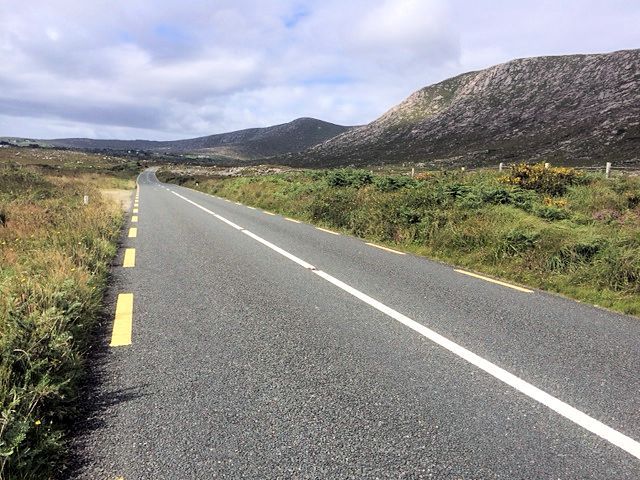
I was always fascinated by Roundstone Bog, a vast and largely intact blanket bog with a myriad of lakes. My first real job was Park Ranger with the Connemara National Park in 1990, and part of my duties involved keeping an eye on this site. On occasions I did stumble upon the stunning black and gold Golden Plover that breed here, and I watched elusive Merlins feeding on dragonflies. I even spent hours roaming around the quaking bogs looking for signs of feeding Greenland White-fronted Geese, but I never really got to grips with this site, as it takes dedicated and systematic survey work to unlock its secrets. The current Conservation Ranger for the site, Dermot Breen, is a seriously dedicated naturalist who is setting about the task properly. Dermot is studying the bird life of the site in much more detail as it is now a Special Protection Area under the EU Birds Directive. He spends much of his summer months walking transects across the remotest parts of the bog to establish how many breeding Golden Plover the site contains. He thinks this year there maybe 50 or so pairs at Roundstone; a sign they are doing well. He also speaks of painstakingly trying to locate the nests of the Merlin that breed in trees on some of the islands here. These are mightily elusive birds yet he knows where they nest. He even tells me of the two pairs of White-tailed Sea Eagles that attempted to breed for the first time in the area. And of course his skills are not only confined to birds, he is building up a huge body of knowledge of all aspects of biodiversity of this very special conservation area, and through his efforts, there is a far better understanding of how protected species are faring in this magnificent site.
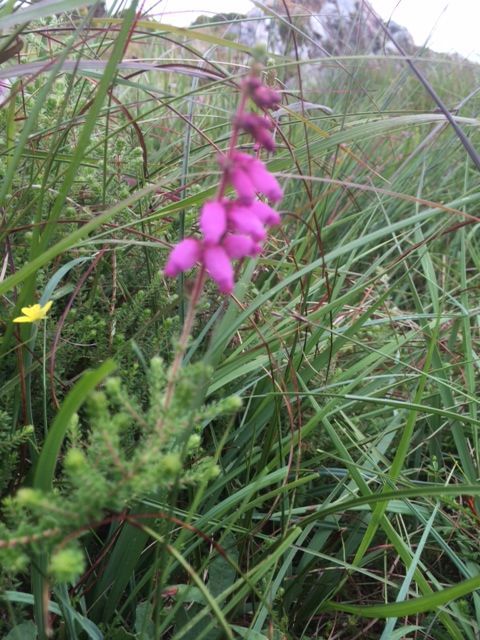
One of the species on my wish list for the tour, the Dorset Heath, grows at one site on this extensive bog, and with Dermot’s help we managed to locate the half-dozen or so plants that exist. How these plants happen to occur here, is anyone’s guess. But the current thinking is that they may have been deliberately introduce here. But regardless, Dorset Heath is one of Ireland’s rarest plants, so it is a treat to have found it again. And as I was once told, rather stupidly, that knowing of its location was a ‘State Secret’, I just had to include it in my wish list. So I have now seen three of the 10 on my wish list.
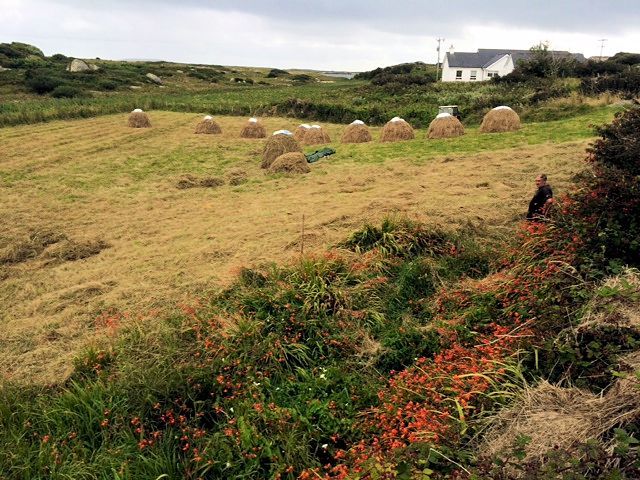
Near Dog’s Bay I came across a farmer saving hay, and stopped for a chat. He told me he was now the last farmer making hay in this area, and would give it up himself in a couple of years time. Helping with saving the hay was a special, albeit romantic, memory of my childhood in Kerry, so it was nice to see. We stopped for the evening in Clifden, a bit earlier than planned, in order to relax and to celebrate Bella’s Leaving Certificate results, which she received earlier in the day. Delighted with her results, we had a lovely meal and a celebratory drink (or two).

